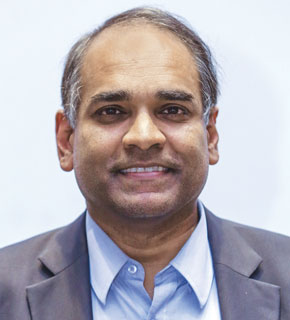
CEO, Xchanging Malaysia

CEO, Xchanging Malaysia
Former US President Lyndon B. Johnson famously said in 1964 that “the answer for all of our national problems, the answer for all the problems of the world, comes down, when you really analyze it, to one single word: education.”
Education is the foundation on which all of society is built and from which it will improve. With the many technological advancements in data sciences being used to better things like the procurement industry or reducing our car insurance premiums, isn’t it time we looked at what they can do for education?
There are essentially two areas where Big Data and data sciences can improve education systems – help the students or help the schools.
Helping Students
One thing we are working on right now is the ability to identify at-risk kids inside the educational system. We are doing this by tracking students’ past behaviour across an upwards of 75 different parameters; demerit points, disciplinary records, grades, attendance and so on. We look back at students with poor performance, or maybe who have evenbeen forced to leave the educational system, and apply machine learning in order to identify correlations in the data. By interrogating those correlations and assigning different weights to the various parameters, we can apply the findings to the general student population and identify, with as high as 90% accuracy, which kids are at-risk – enabling the school or parents to intercept things before they go wrong.
Without machine learning we simply wouldn’t know what attributes to look at or the importance of each. We could guess, of course, but with data science we are able to throw all of that data into the software and then watch as the correlations appear. It also allows us to see the probability of different outcomes– meaning that in a situation where we’ve identified multiple at-risk kids within a school, the school administration can focus their attention on the most susceptible first. That is powerful!
Helping Schools
There are loads of different ways to improve a school. If you ask the administrators, it’s with better control. If you ask parents, it’s better teachers. What Big Data and data science are allowing us to do is identify all of the characteristics that actually make a school successful, whether it is control, teachers, principals, standards or something else. Machine learning looks for the correlations between these attributes in high performing schools, assigning weights to each, and is then able to apply that insight to other schools, determining which are on the right path and which need change. In the old days, parents and administrators would have to rely on reports published annually to tell them the performance of their school. Now, with data available much more regularly, they can enact change, where needed, a lot sooner.
We can take that insight a step further and not only report on the overall performance of a school but the performance of each individual department. Maybe a school has an average overall performance, but is above average in maths and sciences. Why is that? Is it the teacher, the department head, the facilities? By possessing this level of granular insight, other schools can then make changes to improve their own departments.
Currently, Big Data is actually used very little in education. The majority of educational system worldwide is managed and implemented locally or regionally making it hard to gather significant amounts of data across a large number of schools. Thanks to our involvement in one national education project that covers 11 million students, teachers and parents, Xchanging has a particular advantage here. With this massive sample base, we are able to do more analysis in the education sector than any other organisation.
Another big difference with how we are able to approach the issue comes from our software capabilities and partners. Where most companies are only looking at either the students’ academic data or the schools’ administrative data, we are able to capture both. We can gather grades and academic performance along with things like their extracurricular activities and disciplinary points. By combining the academic side with the admin side, we are able to attain a holistic view of the performance of the teachers and students – and thenprovide actionable insight.
Big Data in education has the potential to greatly help both students and schools, but we’ve only just begun to scratch the surface. Imagine what this level of insight could mean for our kids going forward; better learning environments, bespoke curricula, increased safety, better fit between students and teachers, and more. It’s an extremely exciting application for Big Data and machine learning, and one that will affect us all. If LBJ is right, and education is the answer to all of the world’s problems, then we should be doing everything we can to make it better!






















